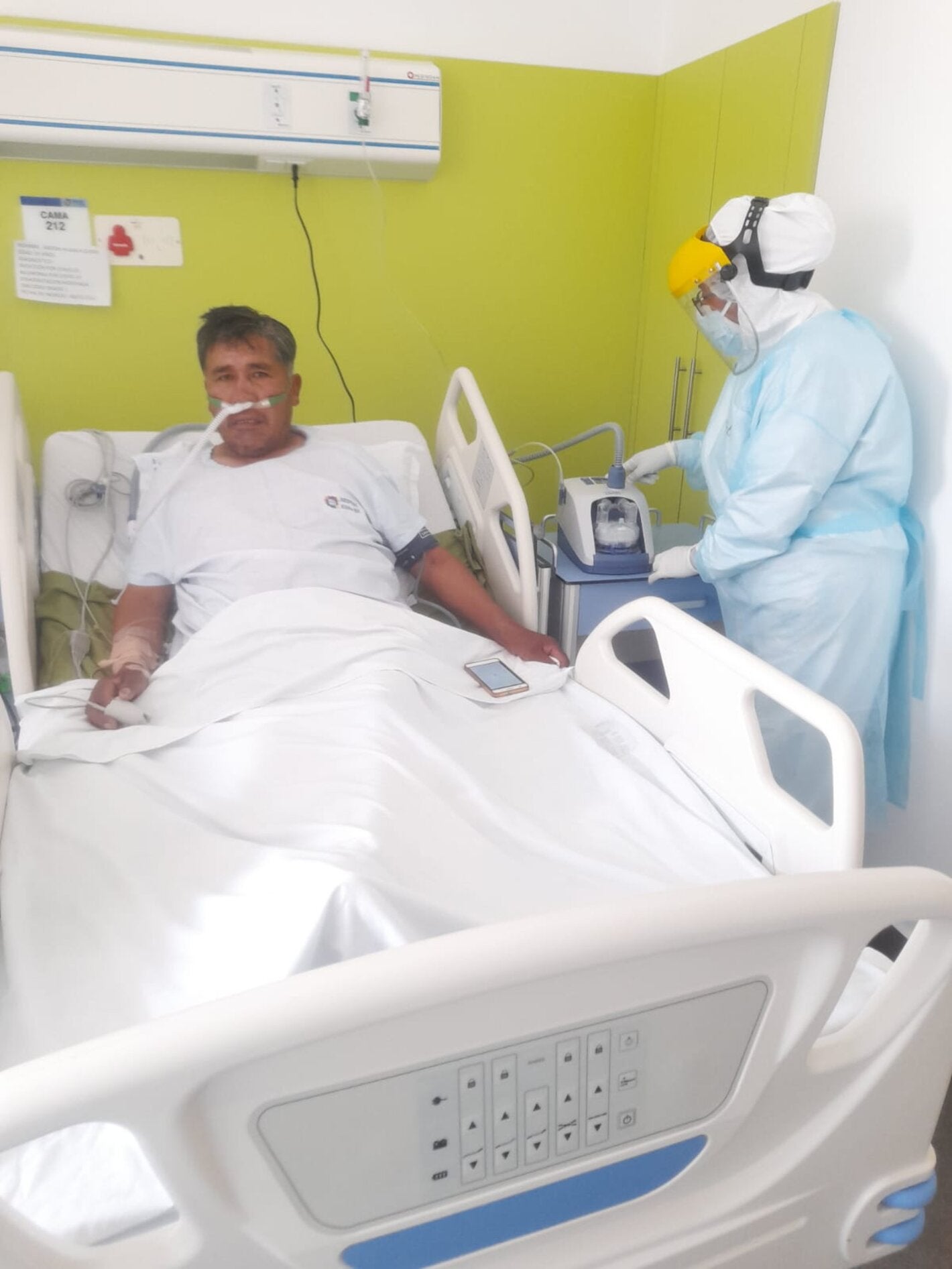
Improved access to medical oxygen
The first case of COVID-19 was diagnosed in Bolivia on 11 March 2020. Two years later, the total number of cases reached nearly 900 000. The country has witnessed four waves of COVID-19, each having a higher peak than the previous one. This situation has caused bed occupancy to increase with each wave, despite a substantial increase in hospital intensive care unit beds. The health system now has a total of 2473 hospital beds and 508 intensive care unit beds, more than three-fold the figures prior to the pandemic.
The day the country presented its all-time high record of new COVID-19 cases on 20 January 2022 (n=1011), the hospital bed occupancy in the public healthcare system reached an average of 43% and intensive care unit bed occupancy reached 65%. The country´s largest city of Santa Cruz de la Sierra and Oruro, a city 200 kilometers south of La Paz, the seat of government, experienced a disturbing average of 81%. In the previous three waves of the pandemic, the hospital and intensive care unit capacity rapidly reached 100% bed occupancy in all departments (analogous to states or provinces) of the country. Oxygen therapy in the first level of referral provides early oxygen support to COVID-19 patients as well as reduces the number of patient referrals to secondary and tertiary level hospitals and intensive care units thereby avoiding overburdening capacity. There is also the social and psychological benefits of keeping the patient relatively near to his/her family and community. Due to COVID-19, stricter regulations in hospitals prevent family members from providing such support.
How did Bolivia do it, and how did the WHO Secretariat support Bolivia?
By mid May 2021, within the framework of the Bolivian Universal Health Strategy, the “Sistema Unico de Salud” (SUS), the Ministry of Health of Bolivia (MoH), with the technical assistance of Pan American Health Organization (PAHO)/WHO, announced the implementation of a comprehensive plan aimed at providing oxygen therapy for all levels of care in the public health system.
Focusing on the first level of care, 260 oxygen concentrators were donated by PAHO/WHO to the Bolivian government to reinforce the COVID-19 response. A further 360 hand oximeters, 592 finger oximeters and other supplies were donated worth 365 304 US dollars. A second set of 50 oxygen concentrators was provided in early February 2022.
A 53 year old patient was in his eighteenth day of treatment in El Alto Sur Hospital and was ready to return to conventional oxygen therapy (10 L/min) after 11 days of treatment with high flow oxygen therapy as his saturation had improved to 93% for a steady 48 hours. He was confident that he would leave the hospital and soon be on his feet after arriving in an ambulance with a saturation of 48% almost 3 weeks ago.
By the end of November 2021, the Ministry of Health’s strategy to cope with moderate COVID-19 cases was reinforced with the support provided to hospitals with high flow oxygen therapy. PAHO/WHO donated 20 high flow oxygen therapy devices that were distributed by the Bolivian Ministry of Health to four large urban hospitals in Bolivia: El Alto Sur, Cochabamba Norte, San Juan de Dios Oruro and Santa Bárbara hospitals.
Practical and technical support was also given to these hospitals. One hundred twenty healthcare professionals (specialists, general doctors as well as nurses) received hands-on training for the correct use of high flow oxygen therapy devices. Furthermore, the Ministry of Health of Bolivia acquired 150 more high flow oxygen therapy devices and PAHO/WHO has promised to provide a second round of training for the use of this additional equipment.
Through PAHO/WHO support, the country has strengthened its capacity to provide oxygen in a sustainable way, both in primary level healthcare facilities as well as in key secondary and tertiary level hospitals. It is expected that the benefits of this strategy will live beyond the COVID-19 pandemic as Bolivians now have better access to oxygen for a wide array of needs. With this comprehensive multi-level approach, it is more likely that less patients will need intubation and intensive care unit in the future.
Photo Credit: ©WHO
Photo Caption: A COVID-19 patient receiving high flow oxygen therapy in El Alto Sur Hospital.



